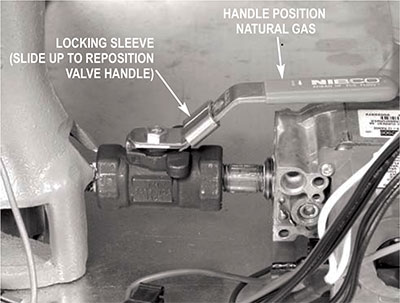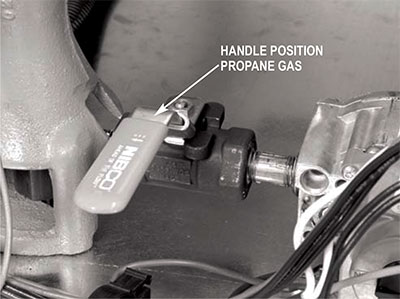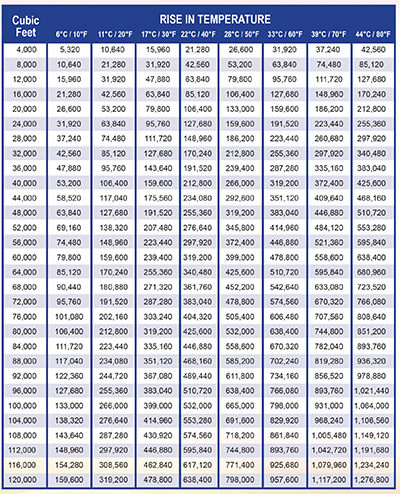
Packing heat
Patrick Flannery
Features Tech tipsTemporary construction heat is an important source of winter revenue for most rental stores.
But your investment in heat can be wasted if customers can’t get the right heat solution for their job sites. Knowing how construction heaters work, and the differences between their designs, can help you choose the right products for your inventory and direct your customers to the correct solution for their situations. Gary Webb, national sales manager for L.B. White and 12-year veteran in heating sales and rentals, assisted Canadian Rental Service to develop this primer on rental heat.
 |
|
 |
|
| Many heaters are available with the ability to run off more than one kind of fuel. This gives users the option to transition to a second fuel type when one runs out, or to save money once a jobsite is plumbed.
|
Direct-fired heat
Direct-fired heaters use a simple design that allows outside or environment air to enter the heater, pass over the combustion flame and exit the other side as intensely heated air. The simplicity makes it very simple and easy to operate. The lack of a heat exchanger and other components makes it very cost-efficient as well. Further, because 100 per cent of the fuel used in the combustion process is converted into heated air, these units are highly fuel-efficient. The negative is there are byproducts produced during the combustion process (such as carbon dioxide, soot and carbon monoxide) that enter the environment. As a result, direct-fired heaters can only be used in well-ventilated conditions. The provision of fresh air not only aides in the transfer of contaminates out of the environment, but also replaces oxygen consumed in the combustion process.
Indirect-fired heat
Using a much more complicated design, indirect fired heaters use a heat exchanger which allows air to pass through the heater while never being exposed to the combustion flame. The combustion chamber is fully enclosed within the heater and is vented through a chimney stack to the outside releasing all contaminants and moisture while only clean dry air is exhausted into the environment. While the benefits are obvious, this type of system is less fuel efficient (as heated air is being vented alongside the contaminants), and typically has a higher original equipment cost.
Exposed flame
There have been concerns in the past surrounding the safety of direct-fired heaters and their potential to cause fires due to their exposed flames. Older designs produced a jet of flame that shot out well past the heater’s enclosure. Modern day technology used by some manufacturers allows for the flame to be well contained deep inside the barrel of the heater. Further, although the indirect-fired heater uses a completely enclosed combustion chamber, there are some direct-fired models that use an enclosed combustion chamber (such as Sure Flame and L.B. White). Although the systems are still direct-fired (because the heated air output passes over the combustion flame) and deliver most of the fuel efficiency benefits of direct-fired systems, the actual flame is not visible or touchable from the outside, providing maximum safety.
Ductability
The use of ductwork is commonplace on construction sites and allows the heated air to be directed away from the heater unit and into the desired part of the working environment. Because indirect-fired heaters are typically placed outside of the building or environment, ductwork is essential. Direct fired heaters are typically placed inside the environment and therefore do not require ducting. In most cases, ducting simply cannot be used on direct-fired systems because of the risk of exposing duct material to the combustion flame. As well, the use of ducting may also create back pressure on the unit forcing reduced air flow and ultimately shutting down the combustion process for safety reasons. Direct-fired units with enclosed combustion chambers are approved for use with ducting, but there are strict length restrictions in order to prevent unwanted back pressure.
 |
|
| Handy BTU charts like this can help you calculate the BTUs necessary to get a certain temperature rise in a given space. But BTUs are only part of the answer to applying the right heat solution. |
Fresh air supply
Simply defined, combustion creates a reaction when the three components of fuel, air and ignition are combined. Because all three components are required, a heater will not operate without adequate fresh air. An indirect-fired system typically operates outside of the building and therefore has a more-than-adequate fresh air supply. That same fresh air is what is being exhausted into the environment in heated form. Because direct-fired systems are typically used inside the environment, they must have fresh air supplied to the unit. This not only allows the combustion process to occur properly, but because the exhausted air is contaminated, it also provides air exchange to provide breathable air to the workers. The rule of thumb for fresh air provision when using direct-fired heaters is one square inch of air exchange per 1,000 BTU of heat output. For example, a 150,000 BTU heater requires 150 square inches of fresh air exchange. For this reason, cost and fuel-efficient direct-fired heaters are commonly preferred in the early stages of construction when there is adequate fresh air supply, but as the building becomes more and more enclosed and fresh air is limited the transition to indirect-fired occurs. In situations where the building is fully enclosed or occupied, direct-fired heaters are not an option and indirect-fired heaters must be used.
BTU
What is a BTU and how many do I need? BTU stands for British Thermal Unit and is a standard and traditional unit of measure in the heating industry. It is the equivalent of 1,055 joules and is more simply defined as the amount of energy required to heat (or cool) one pound of water by one degree Fahrenheit. Although the science behind the measurement is much more complicated than that, it is more simply used in our industry to determine how much heat is required to elevate the temperature within an unheated environment to a comfortable working level. A simple rule of thumb is one to three BTU per cubic foot of air per hour depending on the amount of insulation, air circulation and other conditions of the environment. There are manufacturers that will market their products’ ability to heat a certain amount of square feet, when in reality the calculation should be made on cubic feet. The ceiling height of an environment will be a large contributing factor to determining how many BTU are needed, as it is the total environment space that is needing heat, not just the floor. There are a number of calculators available that can assist with calculating the required amount of BTU.
Fuel supply
There are many types of fuel that can be used to satisfy combustion, but in the construction industry it is narrowed down to three primary fuels: liquid propane gas (LP), natural gas (NG), and oil (which may consist of kerosene, diesel, stove or fuel oil). LP typically burns cleaner and has no or very low odour, but can present storage and transportation issues as there are many laws, rules and regulations surrounding its use. Although these may not be as complicated as many rental operators believe them to be, you should check with your local gas association for requirements. Natural gas is becoming more and more available across the country and many contractors will make the decision to switch from LP to NG once the environment has been plumbed and certified. This is done primarily as a fuel cost savings to the contractor. For this reason, many manufacturers now make dual fuel heaters that allow for a very simple transition from one gas to the other.
Print this page
Leave a Reply